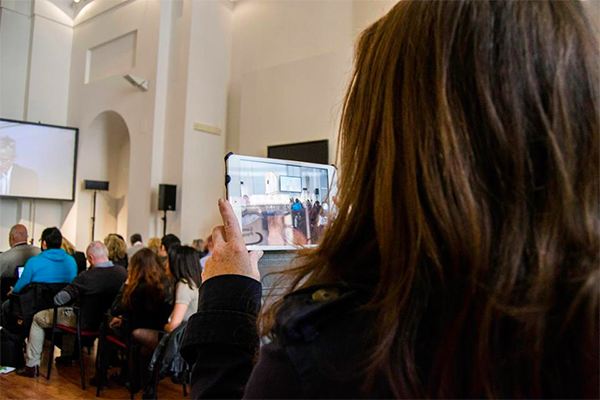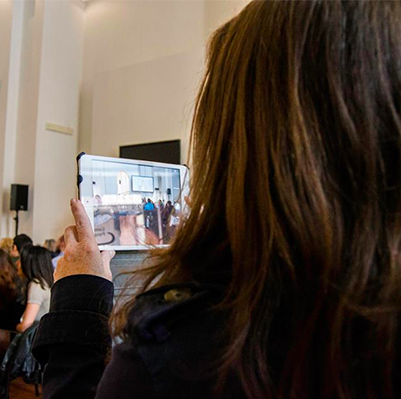by Fabio Chiusi
 photo by Rita Alessia Dispoto
photo by Rita Alessia Dispoto
Freeing the data produced by the measurement projects of online censorship and the adopted method making more transparent. This is the proposal made by Arturo Filastò, vice president of the Hermes Centre for Human Rights and Transparency (Centro Hermes per i diritti umani e la trasparenza). It is a kind of Copernican revolution for the industry, an incentive to move from a ‘top-down’ to a ‘bottom-up’ approach, gaining scientificity applied to the obtained results.
In a speech at the International Journalism Festival entitled “There’s more censorship than meets the eye: mapping and analysis”, Filastò explained his theory affirming that: “In the world of censorship analysis, there are various initiatives. All of them have a number of problems. To understand the reality of censorship they often start from anecdotal evidence-based conclusions”. As with Herdict, a project based on user reports that, as a consequence, cannot exclude the risk that “some of the collected results cannot be trusted because the user does not know the exact reason why a particular website is not reachable”. For example, the user could have mistaken connection problems for a censorial intervention. In other cases, says Filastò, the starting point is actually the data, “but they are not disclosed to the public”, like the Open Net Initiative, which “only publishes the results of the analysis.” It is, however, to bring more transparency to the methods used.
This is the purpose of Ooni, an initiative of which Filastò is the lead developer and aims to measure, through transparent methods and data freely available to anyone, cases of manipulation of Internet traffic and blocking content. Some examples given by Filastò concern the recent crackdown in Turkey, and a case in Moldova in 2013. The numbers already recorded are around 1,629 in 27 countries.
At the moment, the problem is that even if the data are open, they are incomprehensible to the layman. For this reason, Filastò says, Ooni has embarked on a collaboration with the Chokepoint Project, with the aim of making data more digestible to the public as well as to the legislator.
What is the goal? “Getting to the truth about the state of censorship in the world” says the programmer ambitiously and unearthing certain evidence. In this way, it will be possible make better decisions to deal with online censorship because to measure it is extraordinarily important.
First of all, because censorship is much more present in our lives than we think. In Italy, for example, “there is a strong control”. According to Filastò, the reason lies in a overly strict libel law, which “allows you to order the confiscation of a website just because it contains defamatory comment”. This situation has been exacerbated by the Copyright Law and Regulation which recently came into law.
Secondly, because the censorship on the Internet – defined as “a subset of surveillance”, since “it is impossible to censor something without analyzing the data flows that pass through the connections of that particular country” – is a factor that increases inequalities. Censorship, in the forms known so far and that Filastò has summed up well, is “senseless” because it is always avoidable. However, the effect of what experts call ‘Filternet’ is that only some segments of the population, which are still the minority, bypass it having the skills to do so. The result for all the others is less access to information. “This increases social gaps, creating first and second class citizens”. It is only towards the latter category of individuals that censorship is really effective.
A (good) measurement allows for a better view of the proportions of both problems just mentioned. This is not all. Measuring censorship is important because from the data “it can be possible to determine the degree of freedom of expression in certain countries,” says Filastò (although, as noted by Jacopo Iacoboni of La Stampa, there is much that remains outside of the data; for example self-censorship due to environmental or political pressures). Quantification also is needed to reveal the “economic connections between equipment censorship sellers and authoritarian regimes” as can be read in the WikiLeaks SpyFiles and the analysis carried out by the Citizen Lab in Toronto – with the involvement of Italian companies. Finally, an open approach to the measurement of censorship allows, as in the case of Moldova, to figure out if and when the equipment censors have been updated, which means understanding the evolution going back to what resources were invested in the purpose.
The measurement of the data is also useful to understand how much the pooled analysis published each year by Reporters Without Borders (RSF) and Freedom House (which have been reporting for years a steady increase in online censorship) is really worth. Even their method, Filastò says, “is not transparent”. For this reason, he concludes, “the direction is to develop partnerships with RSF, for example, to give them the opportunity and the tools” to make sure that, in the near future, their analysis will become clear.


